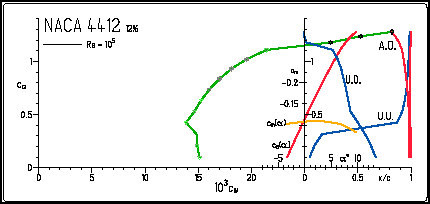

If you don't understand what all this parameters are, read the help as stated in step 2.ĥ) Look at the output info on the screen, it will be useful for setting up your simulation in CS according to all your input parameters. We also want our mesh to be finer towards the airfoil edges, and let's suppose we will use the k-epsilon turbulence model, so an y+=50 will do good. The simulation should be run for a case of Re=3e6, Mach=0.3, a stagnation temperature of 15✬ and air as the fluid. Copy that file to your current working directory.Ĥ) Let's suppose we want a mesh with 100 elements along the chord (that's 100 along the upper surface and 100 along the lower surface), 40 rows of elements close to the airfoil on both sides, 25 elements before and after the airfoil and 15 elements above and below. If you get an error, check you copied the script to a valid directory inside Octave's path.ģ) Any plain text airfoil coordinate file will do (just check it's made in the same way as in XFoil or JavaFoil softwares, it's a pretty standard structure) but for this example we will use the n23012.dat file provided in the attachments.
READ AIRFOIL CODES DOWNLOAD
The tutorial is below:ġ) Download the foilgmsh.m script and place it in a directory inside the path of Octave/MatLabĢ) To check if it's accesible, type from within Octave:Ī somewhat lengthy help text should appear. m scripts), which creates a Gmsh script ready for meshing.

It's a routine I made for Octave, but works without inconvenience in MatLab too (I haven't tried, but SciLab has an import function for. Well, this is not directly related to Code_Saturne, but you may find it useful if you want to have a fully hexahedral mesh around an arbitrary airfoil, only for 2D cases.


 0 kommentar(er)
0 kommentar(er)
